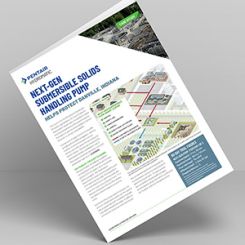Manufacturers and end users should explore their options and see if they can benefit from this technology.
03/06/2014
Three-dimensional (3-D) printing is defined by the American Society for Testing and Materials F42 committee as the fabrication of objects through the deposition of a material using a print head, nozzle or other printer technology. This article discusses a specific type of 3-D printing called binder jetting, which is the process of a liquid bonding agent deposited through a print head nozzle to join powder material. The material being bonded is sand, which can make a casting directly from 3-D printing.
How It Works
3-D printing works much like a 2-D printer in a home or office. However, instead of paper, this process uses paper- thin layers of a special foundry grade sand and a specifically engineered binder to create foundry mold components. The process has only a few steps that are repeated until the desired shape is produced. The sand is spread and the binder is selectively dispensed, guided by computer aided design (CAD) data. The build platform is then lowered by a set increment and a new layer of sand is spread. The binder is then applied again to this new configuration using the CAD data. The process is repeated until the part is built to completion. At that time, the part can be extracted from the surrounding sand and used in foundry applications. 26-inch diameter 3-D printed sand core impeller with five veins, the drag view shown
26-inch diameter 3-D printed sand core impeller with five veins, the drag view shownPump Component Molds
The sand, hardened with the specifically engineered bonding agent, can be used to make cope and drag mold halves and cores. These are the basics of foundry components. The printed sand can also be used as a representation of the part for form of mock ups or as an engineering model. It provides a tactile representation of the part that can be used for fit and even fixture setup in the machine shop. Painted, it looks like a sand casting and weighs about 0.06 pounds per cubic inch. This sand can be used to make a core for any of the conventional molding techniques in a foundry and is safe for use with any alloy. This core could be complex and would not need any assembly because the 3-D printing process eliminates the need for conventional tooling, such as core boxes. One advantage of having no core assembly is that the internal cored passages of the casting are cleaner with no fins at the core assembly joints and no casting defects from poor core assembly or missed mudding at those joints. This 3-D printing process results in less post foundry cleaning of the internal passages, which produces better internal pump passages. This internal core could also be made with no draft, which may provide better pump performance or efficiency. 26-inch diameter 3-D printed sand core impeller with five veins, the cope view shown
26-inch diameter 3-D printed sand core impeller with five veins, the cope view shownFlexibility
Another benefit of this printed core is the ability to change it whenever needed. No tooling charge is assessed to make a change. If the pump housing pattern is of sufficient design and all an end user needs is to upgrade the internal passages, then print them with no tooling and no fuss. This can be a great advantage for one-offs or samples. 28-inch diameter 3-D printed sand core impeller with six veins, the drag view shown
28-inch diameter 3-D printed sand core impeller with six veins, the drag view shown 28-inch diameter 3-D printed sand core impeller with six veins, the cope view shown
28-inch diameter 3-D printed sand core impeller with six veins, the cope view shownAdditional Benefits
For legacy products, 3-D printing has great promise. Damaged foundry tools would not have to be replaced or repaired for those jobs that only run occasionally. Lost tooling would not need to be replaced. A company can print the solution and use whatever tooling is available. Again, this is not an all-or-nothing technology. Mix and match to keep cost low and only make what is needed when it is needed. In the future, patterns may be stored on a server or flash drive and not in a warehouse. The more complicated the casting and the more difficult the core is to manufacture, the more manufacturers and end users should experiment with 3-D printing as a solution. This change in how pump components are manufactured can save money and time and get parts and products to market faster. Engineers can also test multiple solutions simultaneously before committing to expensive permanent tooling. They do not need to compromise design efficiency for the quick ability to manufacture the product. 30-inch diameter 3-D printed sand mockup of a seven-blade propeller
30-inch diameter 3-D printed sand mockup of a seven-blade propeller
